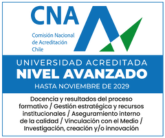Although polyphenols have great pharmacological potential, the main disadvantage is that they have low bioavailability at the desired site. Thus, the use of biocompatible systems for drug delivery is a strategy that is currently gaining great interest. The objective of this study is to evaluate the effect of microencapsulation of caffeic acid and pinocembrin on the antioxidant and antiangiogenic activity of both polyphenols, by the use of nPSi-βCD composite microparticles. For this HUVEC, cells were exposed to H2O2 and to treatments with polyphenols in solution and loaded in the composite microparticle. The polyphenols were incorporated into a microparticle using nanoporous silicon, chitosan and a β-cyclodextrin polymer as the biomaterial. The evaluation of the antiangiogenic effect of the treatments with polyphenols in solution and microencapsulated was carried out through functional tests, and the changes in the expression of target genes associated with the antioxidant pathway and angiogenesis was performed through qPCR. The results obtained show that the caffeic acid and pinocembrin have an antioxidant and antiangiogenic activity, both in solution as microencapsulated. In the caffeic acid, a greater biological effect was observed when it was incorporated into the nPSi-βCD composite microparticle. Our results suggest that the nPSi-βCD composite microparticle could be used as an alternative oral drug administration system. View Full-Text
Keywords: antiangiogenic activity; caffeic acid; pinocembrin; polyphenols; HUVECs; controlled release; nPSi/βCD microparticle



